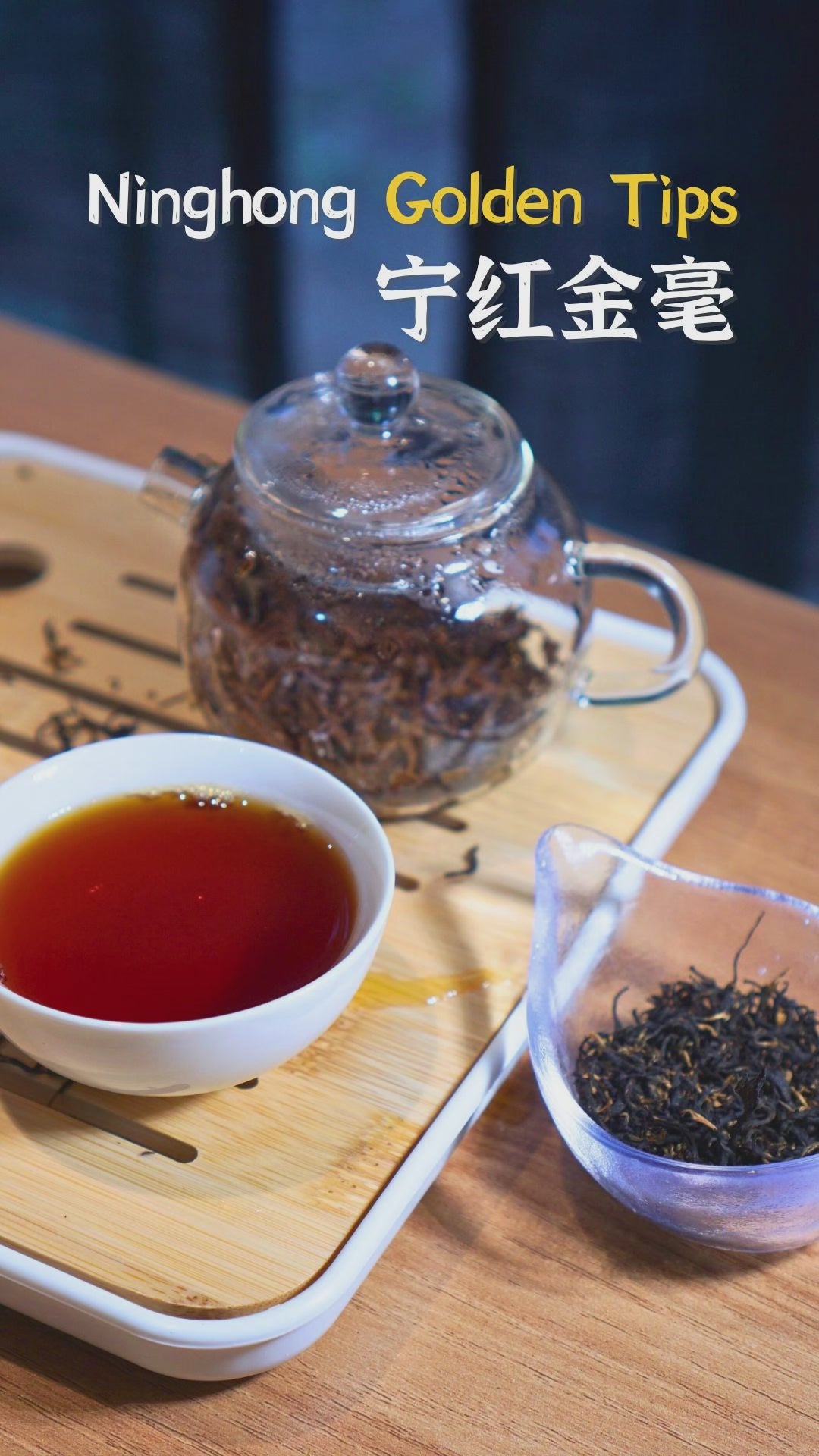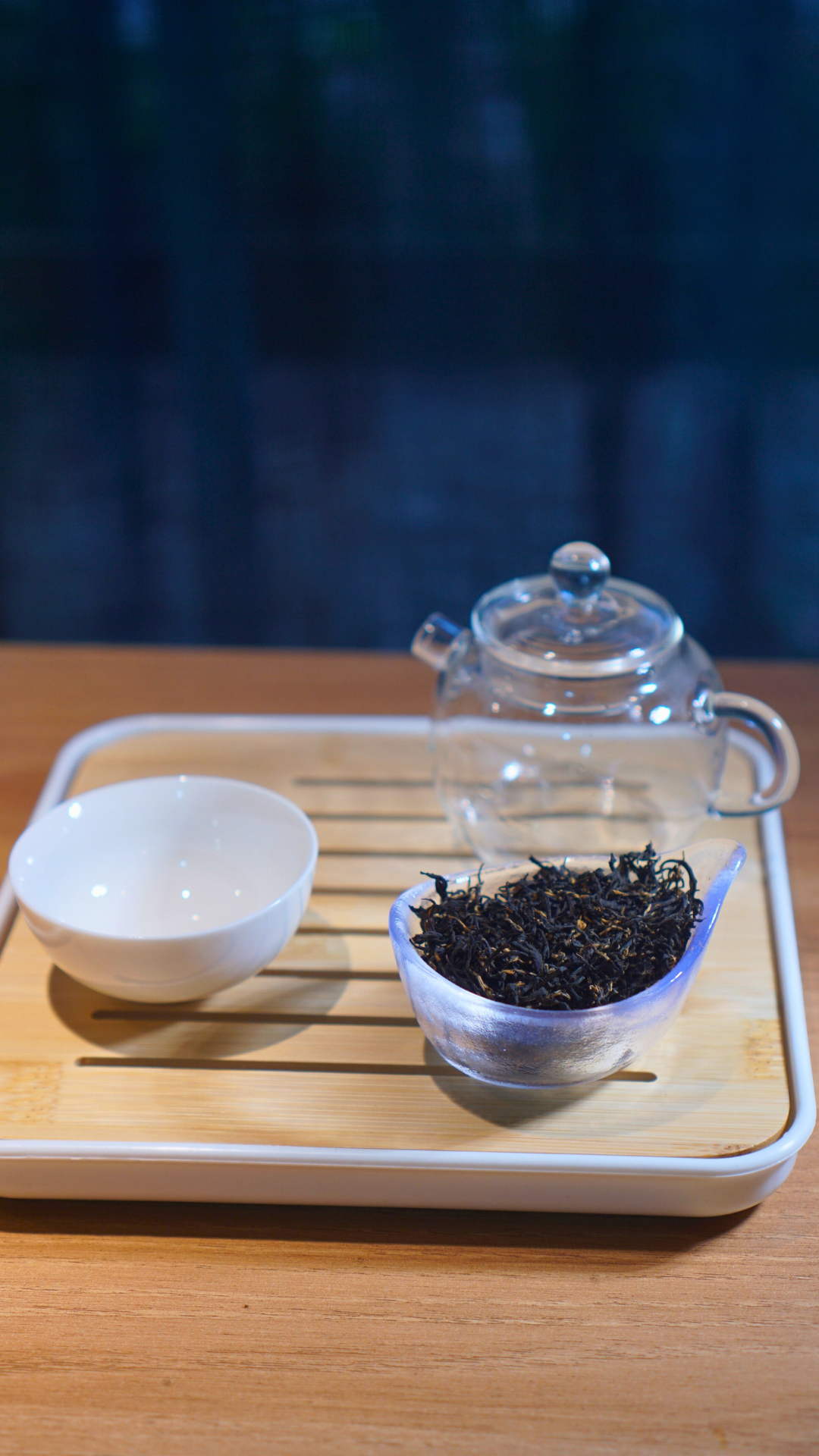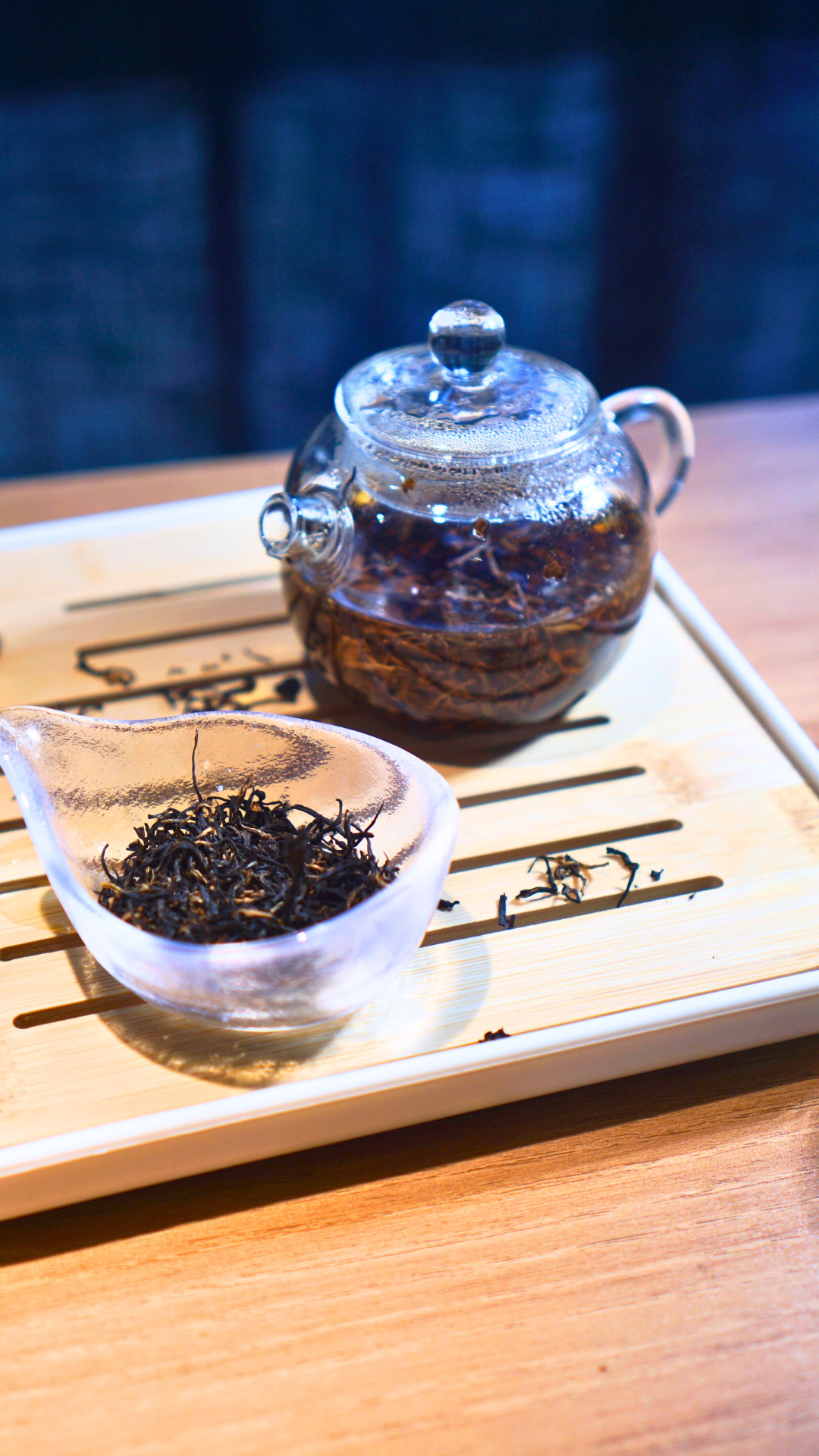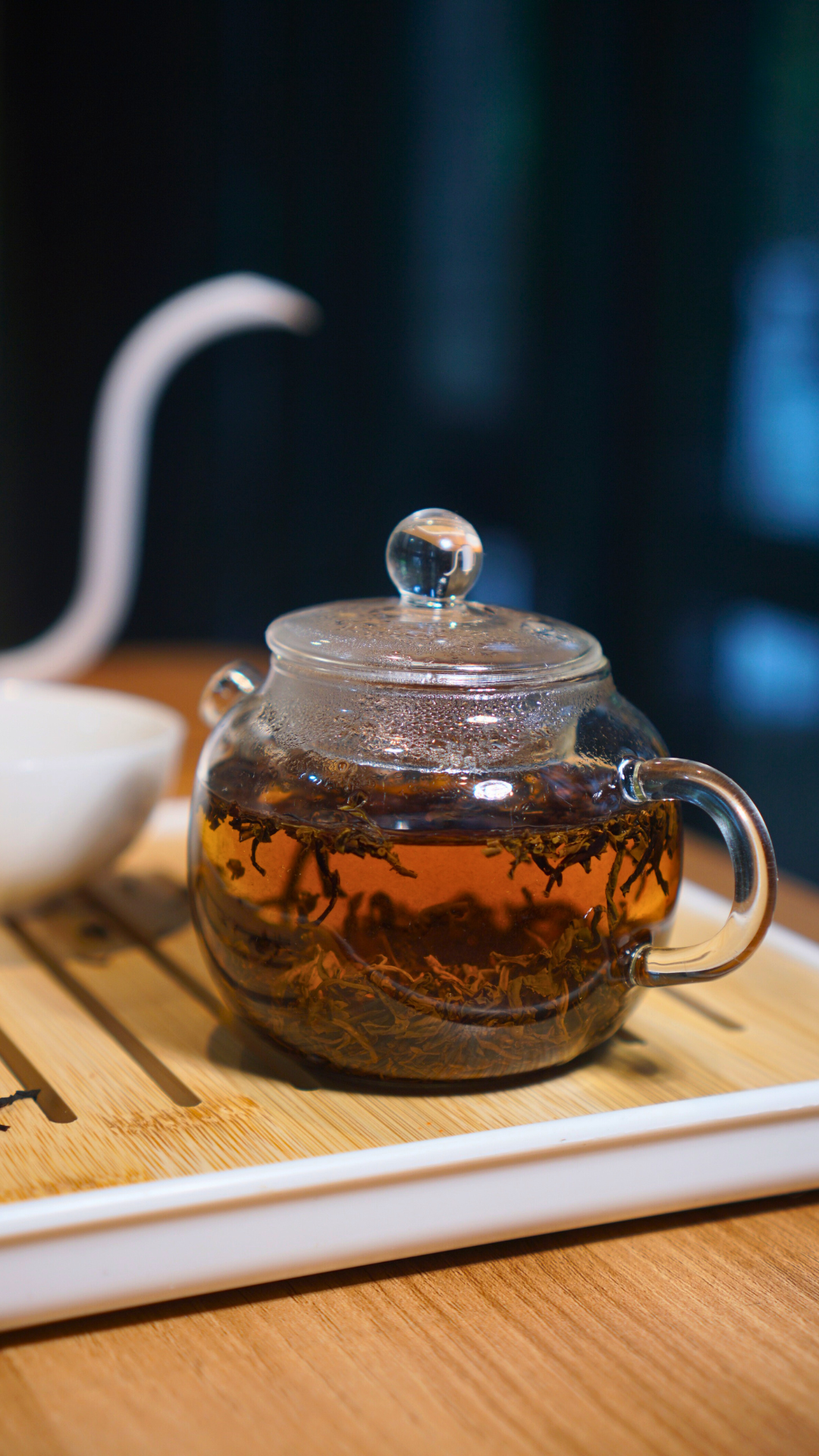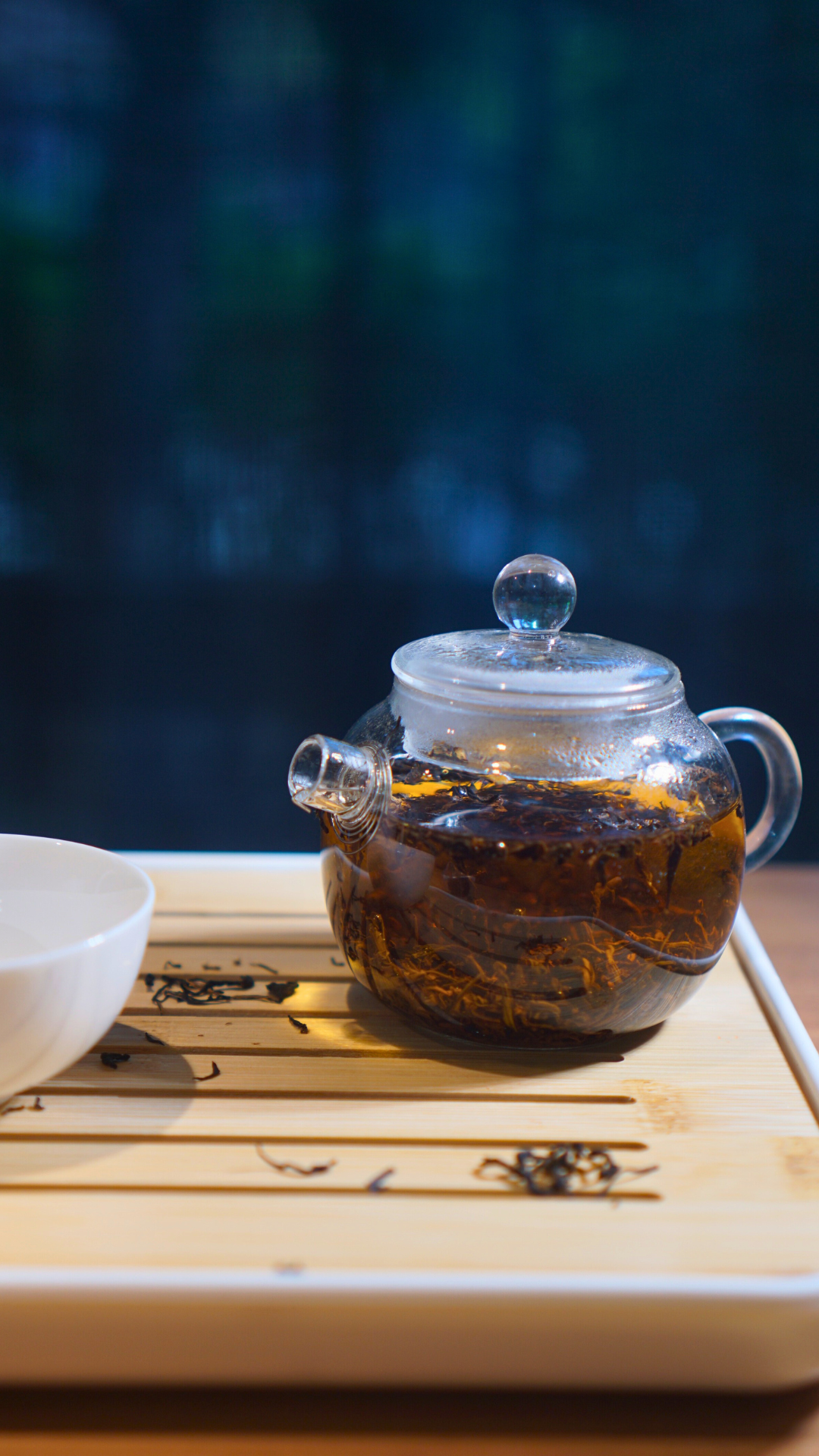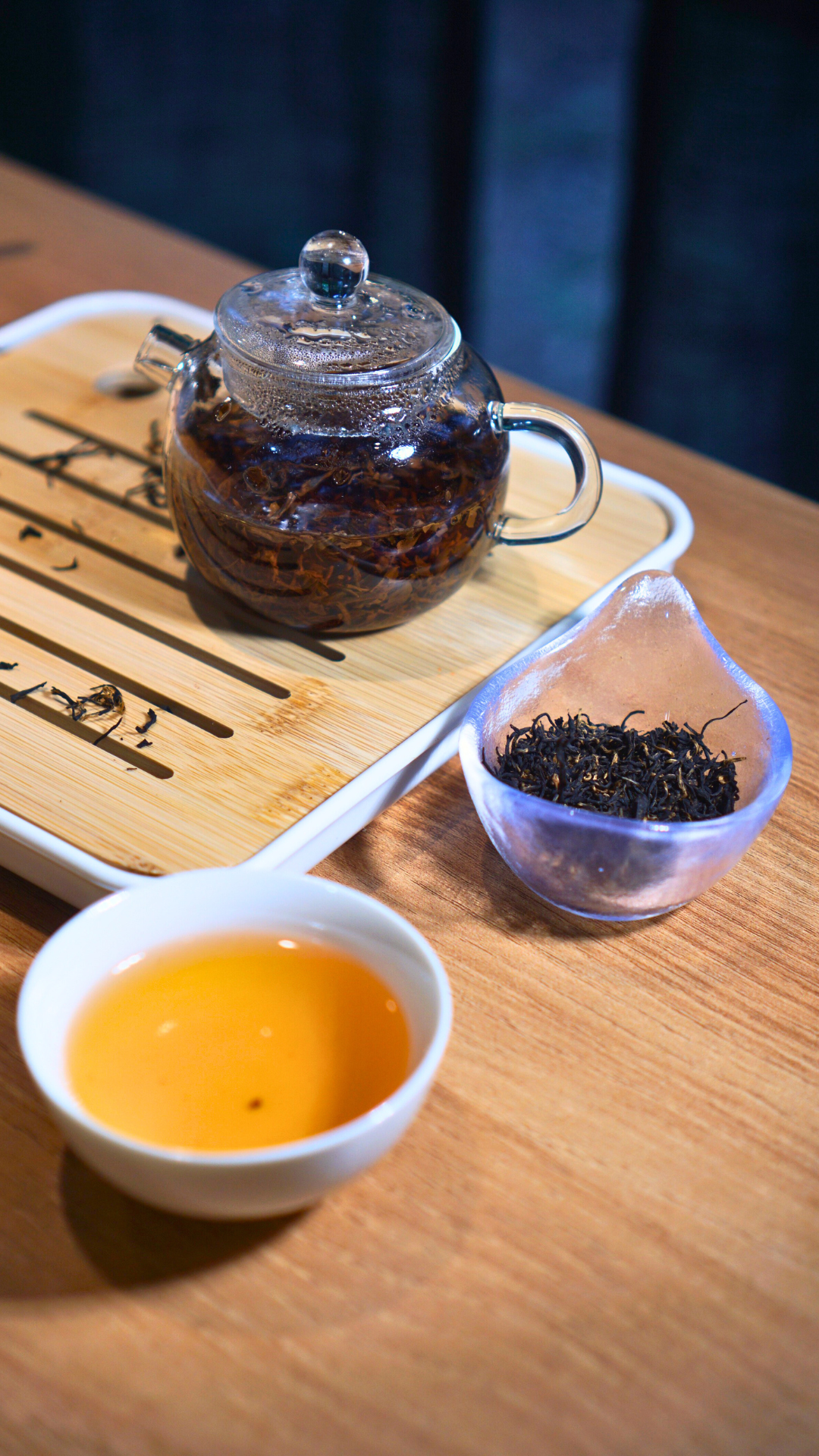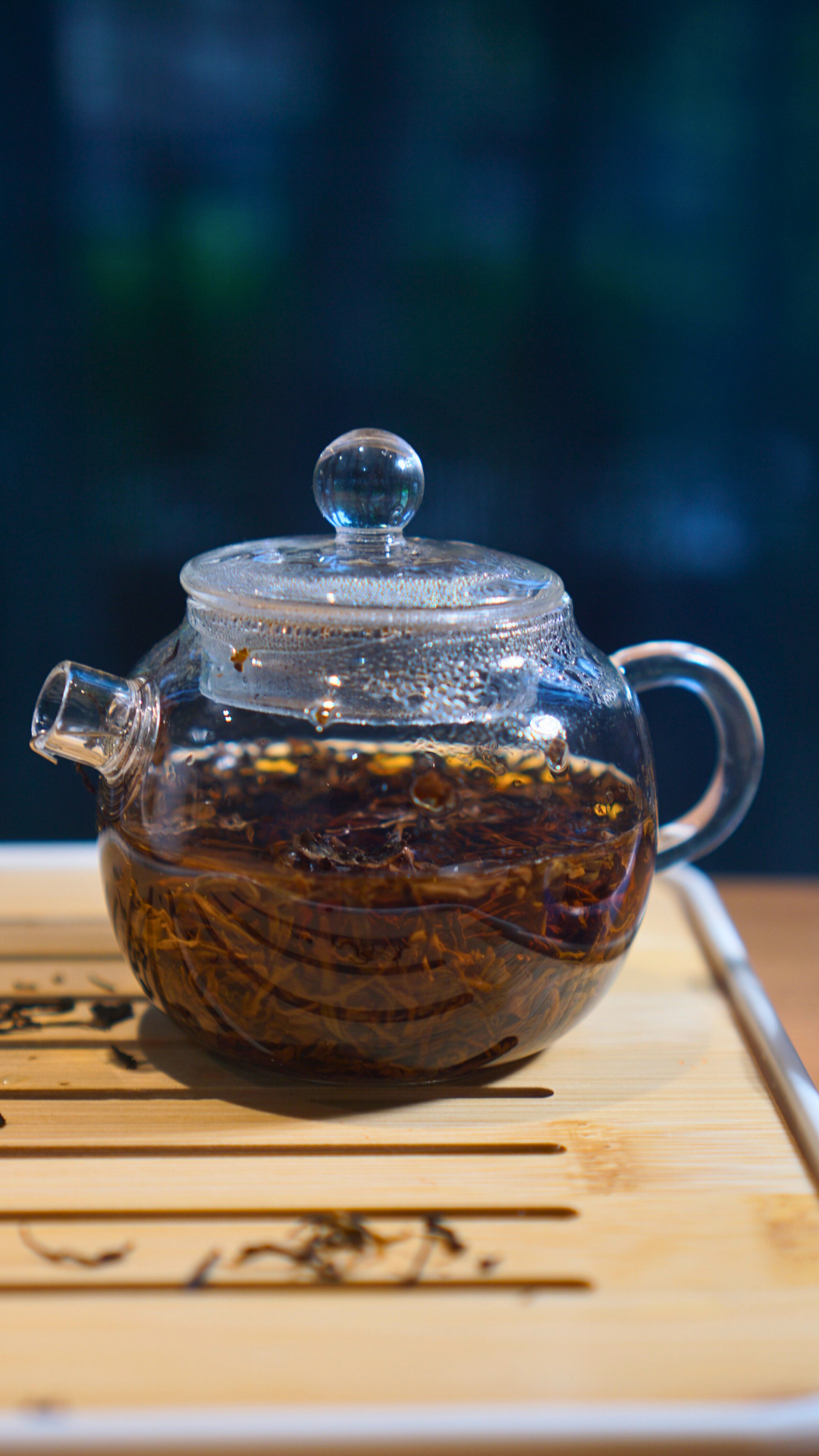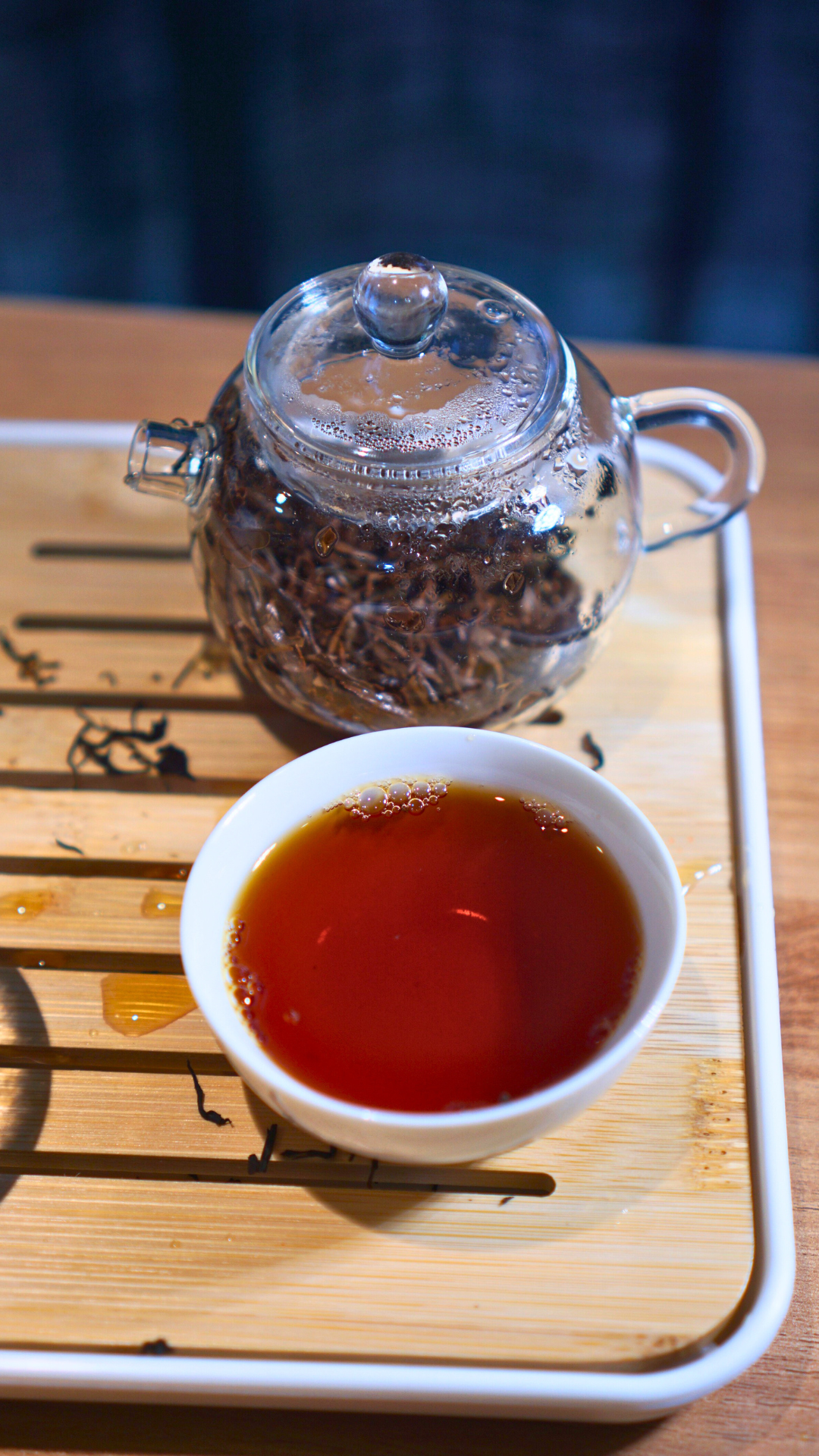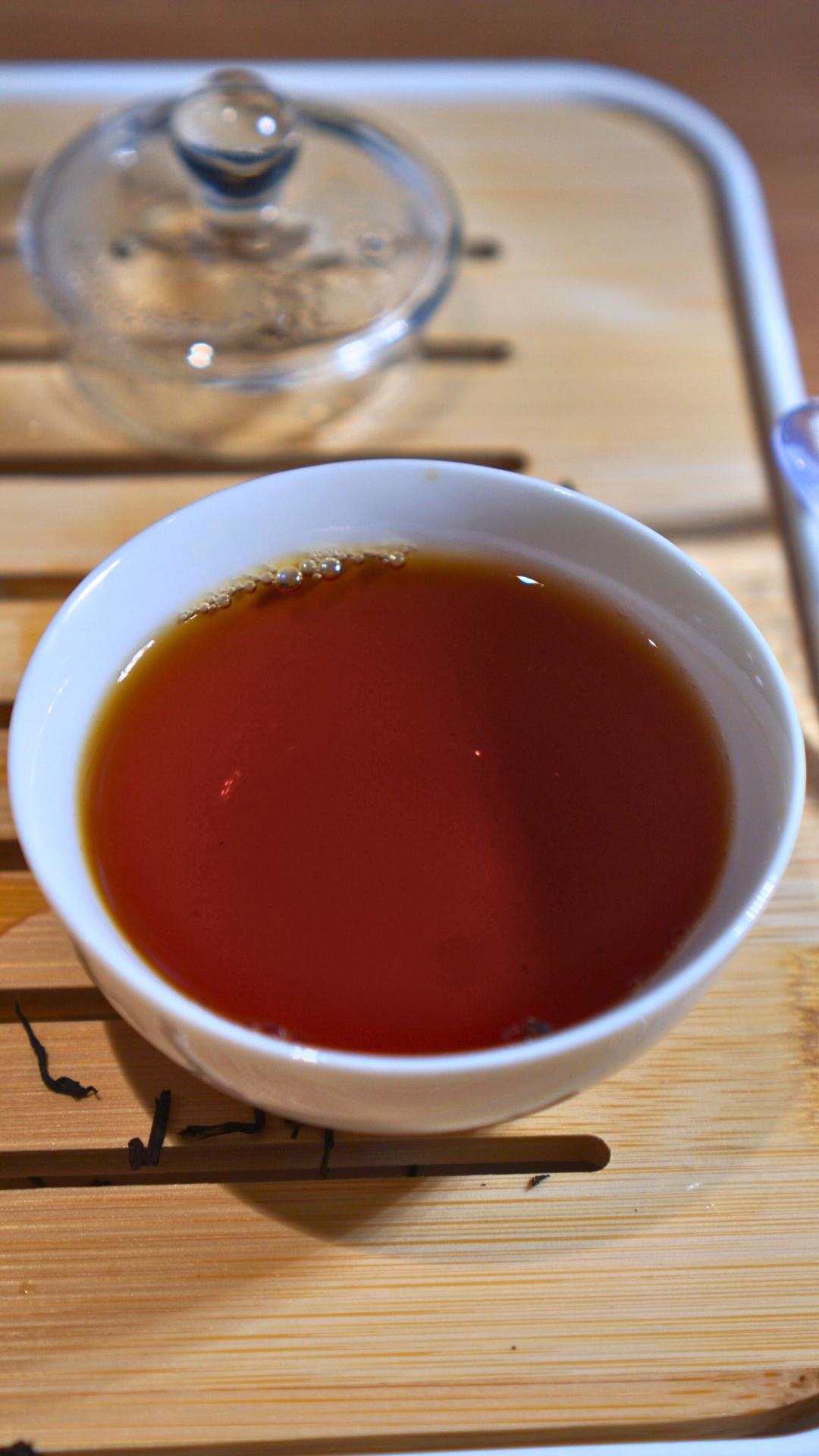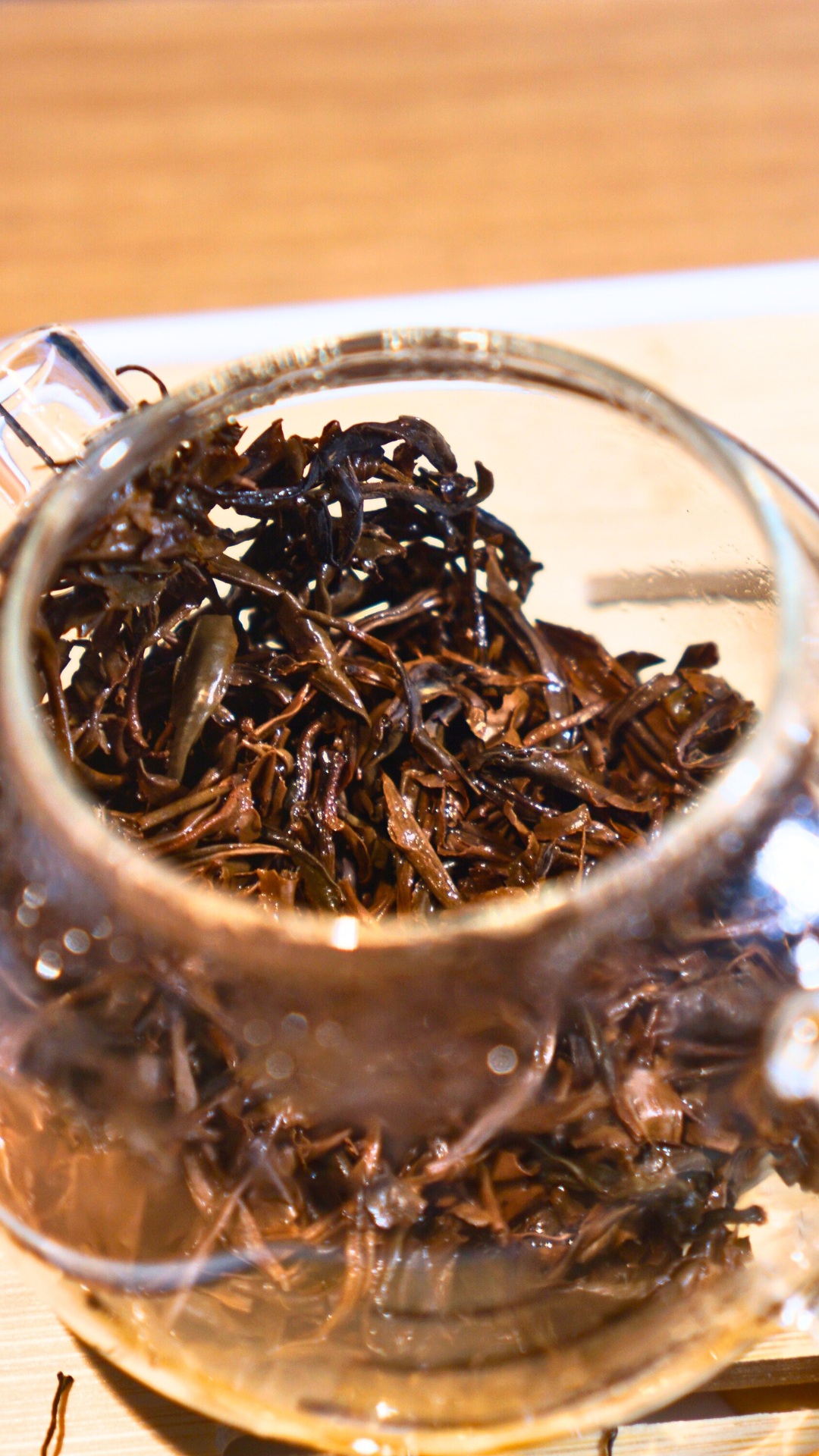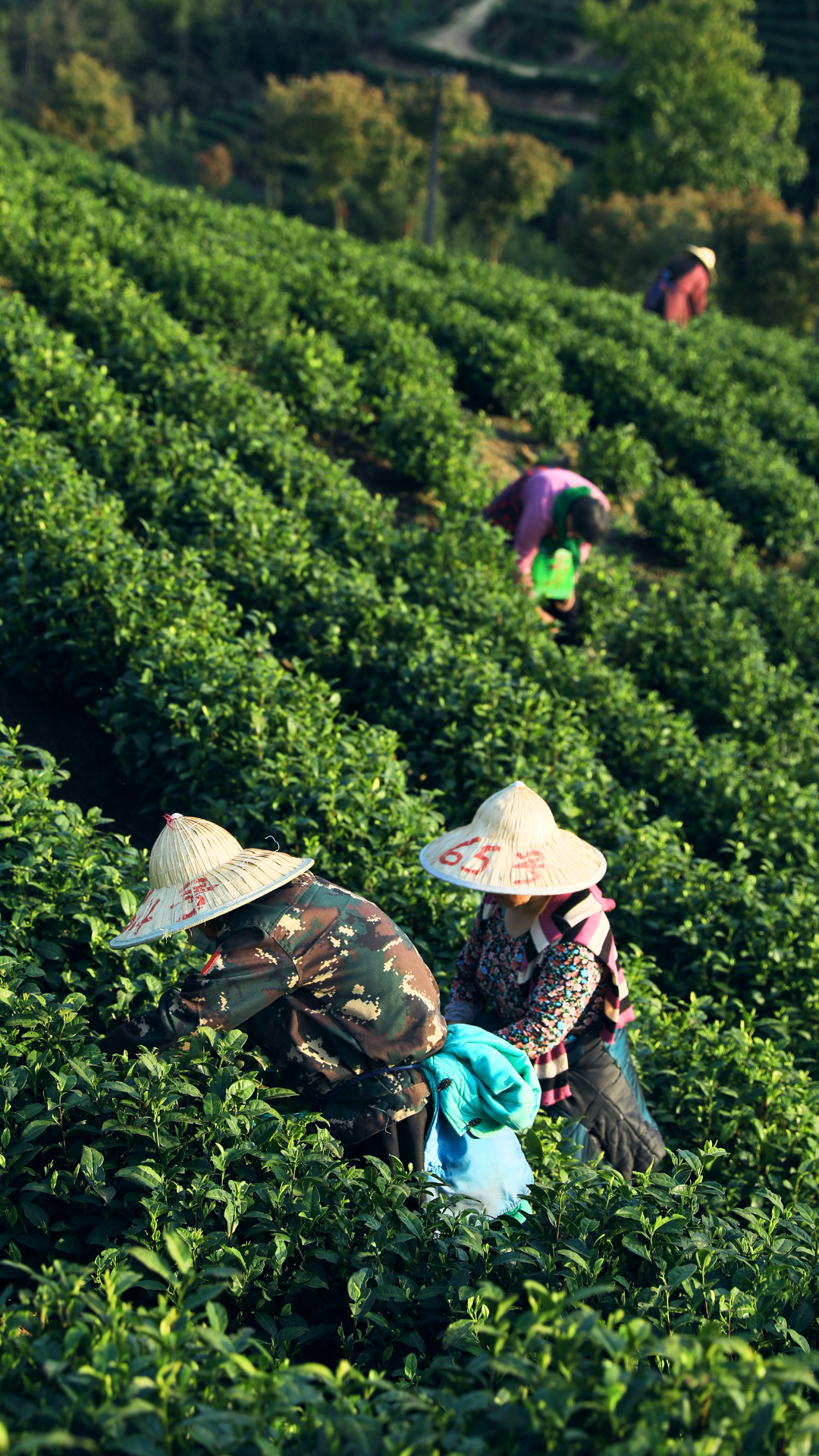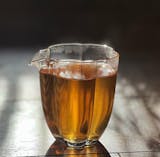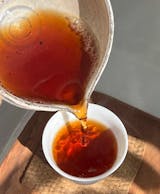Ninghong Golden Tips
Ninghong Golden Tips
宁红金毫
Ninghong Gongfu Black Tea, commonly referred to as "Ninghong," is one of the earliest Gongfu black teas in China, primarily produced in Xiushui(修水) County, Jiangxi Province. The history of Xiushui black tea is long-standing, with more than 1,000 years of production to date. As early as the Daoguang period of the Qing Dynasty (1823), black tea was already being produced.
The Ninghong production area is characterized by mountainous terrain with limited farmland, deep and fertile soil, and a mild climate. Tea trees grow with deep roots and lush leaves, containing rich chemical compounds, which contribute to the superior natural quality of Ninghong Gongfu black tea.
This Ninghong Golden Tips black tea is harvested around the Qingming Festival. The standard for picking is one bud with one newly sprouted leaf. The tea is made through natural withering, rolling, fermentation, drying, refinement, and sieving.
This Ninghong Golden Tips represent the highest grade of Ninghong Gongfu black tea. Its appearance is tight and slender, with prominent golden tips, a lustrous, oily sheen, a rich and long-lasting fragrance, and a mellow taste. The liquor is bright red with a glowing hue, and golden rings appear along the rim of the cup. The infused tea leaves are bright red.
Picking and Processing
Picking and Processing
Tea gardens typically harvest in April, with high requirements for leaf tenderness. Spring tea is harvested in 6-7 batches, primarily picking one bud with one to two leaves.

Key processing points for Gong Fu black tea:

Withering: After picking, fresh leaves are placed in withering troughs or withering machines, or can be spread on the floor for natural withering. The purpose of withering is to evaporate appropriate amounts of moisture, making leaves soft and more resilient, promoting internal chemical changes, and eliminating the grassy smell. Generally, withered fresh leaves should reach about 65% water content. Under normal temperature and humidity, natural withering takes 7-8 hours. Withering time is shorter with higher temperatures and lower humidity, and longer in opposite conditions. Proper withering is indicated by shrunken, soft leaves that clump when squeezed but separate when released, darkened color, loss of shine, reduced grass smell, and emerging fragrance. Withering is a crucial processing stage for developing black tea's aroma.

Rolling: The rolling process for strip-style black tea is similar to green tea, but with higher standards - the strip formation rate must exceed 90%, cell destruction rate over 80%, and tea juice should ooze but not drip. Therefore, higher performance is required from rolling machines.

Fermentation: Fermentation is a unique stage in black tea processing, allowing polyphenols to fully oxidize, creating black tea's characteristic color, aroma, and taste. Black tea is called fermented tea because its red liquor and leaves result from fermentation. Currently, Kung Fu black tea processing still follows traditional methods, with a relatively long processing cycle - over 4 hours from rolling to drying. Fermentation actually begins during rolling, with separate fermentation on the floor lasting only about 2 hours. The ideal fermentation temperature is 24-25°C, with humidity above 80%. Air circulation is necessary for complete oxidation. Proper fermentation is achieved when the grassy smell disappears, aroma develops, and leaves turn red.

Drying: Drying is the final step in black tea processing, aimed at stopping fermentation, evaporating moisture, and achieving crude tea product requirements. Black tea drying typically uses drying machines with a two-stage process.
The first stage is called rough drying, the second final drying. Rough drying should achieve 20%-25% moisture content, final drying 4%-6%. Between stages, tea leaves are cooled and allowed to reabsorb some moisture before the second drying. Drying temperatures follow the principle "high for rough drying, low for final drying" - high being 110-120°C, low being 85-95°C.
Brewing
Brewing
White porcelain teaware is best suited for brewing Gong Fu black tea, such as white porcelain gaiwan, white porcelain teapot, white porcelain cups, etc.
First rinse all utensils with hot water, then add about 3-5 grams of black tea, and pour 90°C~95°C hot water into the gaiwan to 2/3 full, then quickly pour it out - commonly known as "tea rinsing."
When pouring with the teapot, the steeping times from the first to tenth infusion should be approximately: 15 seconds, 25 seconds, 35 seconds, 45 seconds, 1 minute, 1 minute 10 seconds, 1 minute 20 seconds, 1 minute 30 seconds, 2 minutes, 2 minutes 30 seconds. The steeping time can be adjusted according to personal preference.
After brewing, it is recommended to pour the tea into white porcelain cups for appreciation. If a golden ring remains on the cup wall for a long time without dissipating, such black tea is considered premium and precious.
Black Tea Storage
Black Tea Storage
The quality of black tea is determined during the fermentation
process, and if stored properly, its quality remains relatively stable. Black tea has a long shelf life that can last for several years.
The key principles for storing black tea are: avoid light exposure, keep sealed, maintain room temperature, and prevent moisture.
1. Storage Container Selection
Although tea often comes with canisters or bags when purchased, it's best to use professional containers for long-term storage. The ideal containers for tea are made of porcelain, stainless steel, or tinplate. Before placing black tea inside, wrap it in plastic bags and remove air from the bags to better preserve the tea's aroma.
2. Storage Environment Conditions
The storage environment directly affects the quality of tea preservation. The optimal storage environment for tea should be dry, room temperature, and away from light. Additionally, avoid humid conditions, as black tea can easily absorb moisture and deteriorate. Direct sunlight will destroy vitamin C in tea leaves and alter their color and taste; high temperatures will accelerate the breakdown of effective components, reducing nutritional value.
3. Storage Duration
Although black tea can be stored for long periods, even under optimal storage conditions where it can maintain its flavor for 3-5 years, it is still recommended to consume it within 1 year.
- Gong Fu Black Tea
- 500g/pouch
- Free Shipping
Couldn't load pickup availability
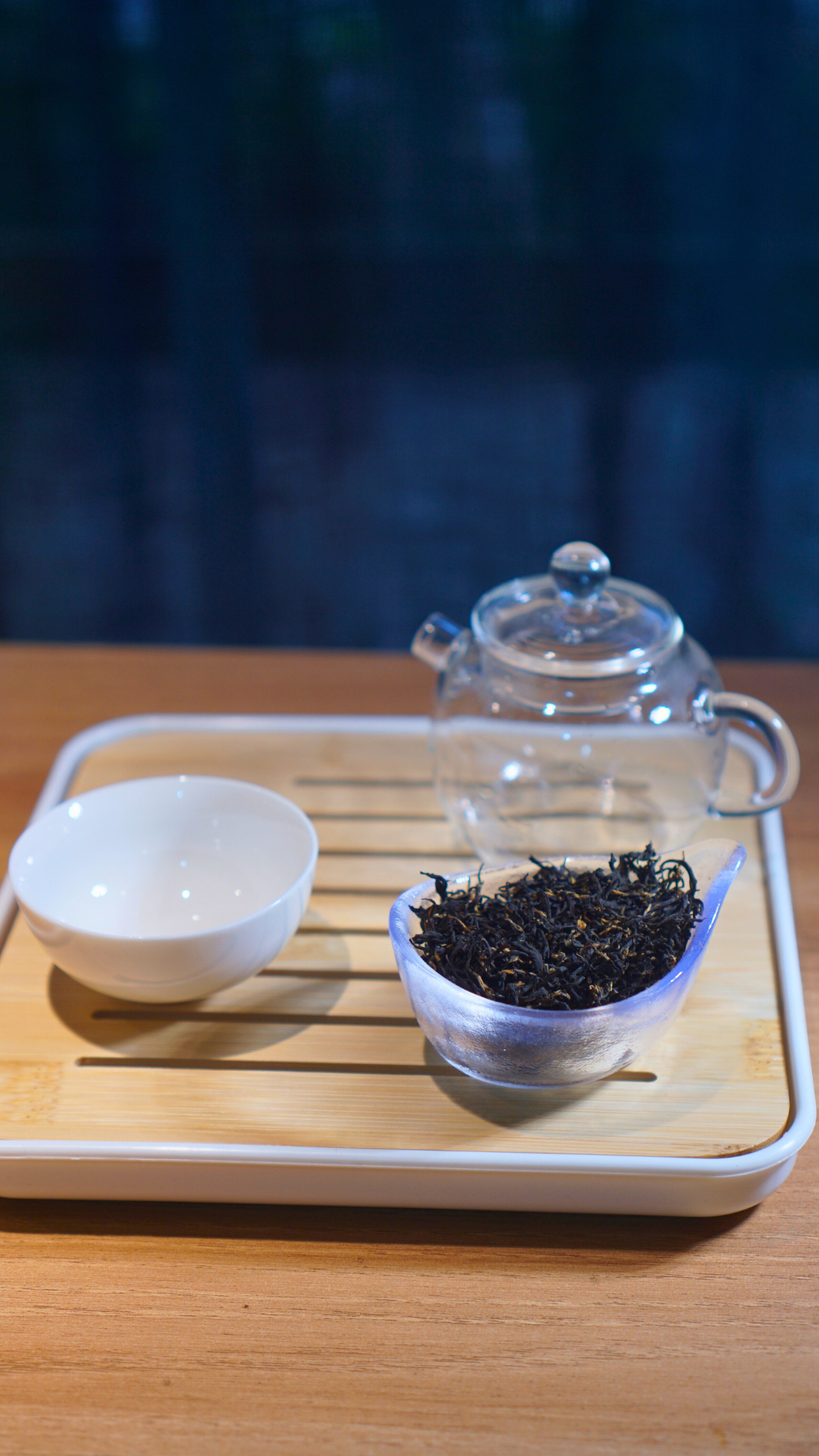

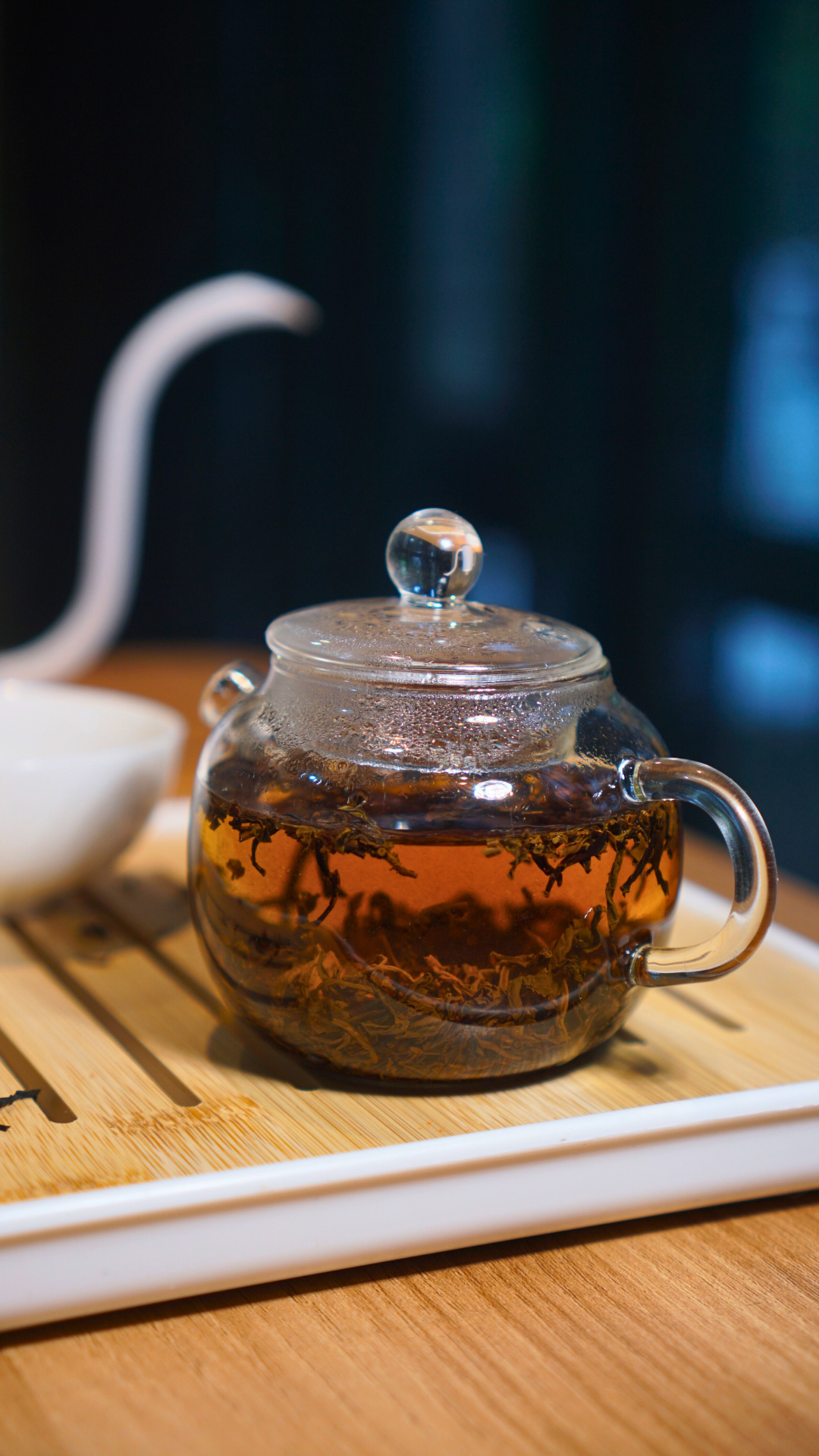
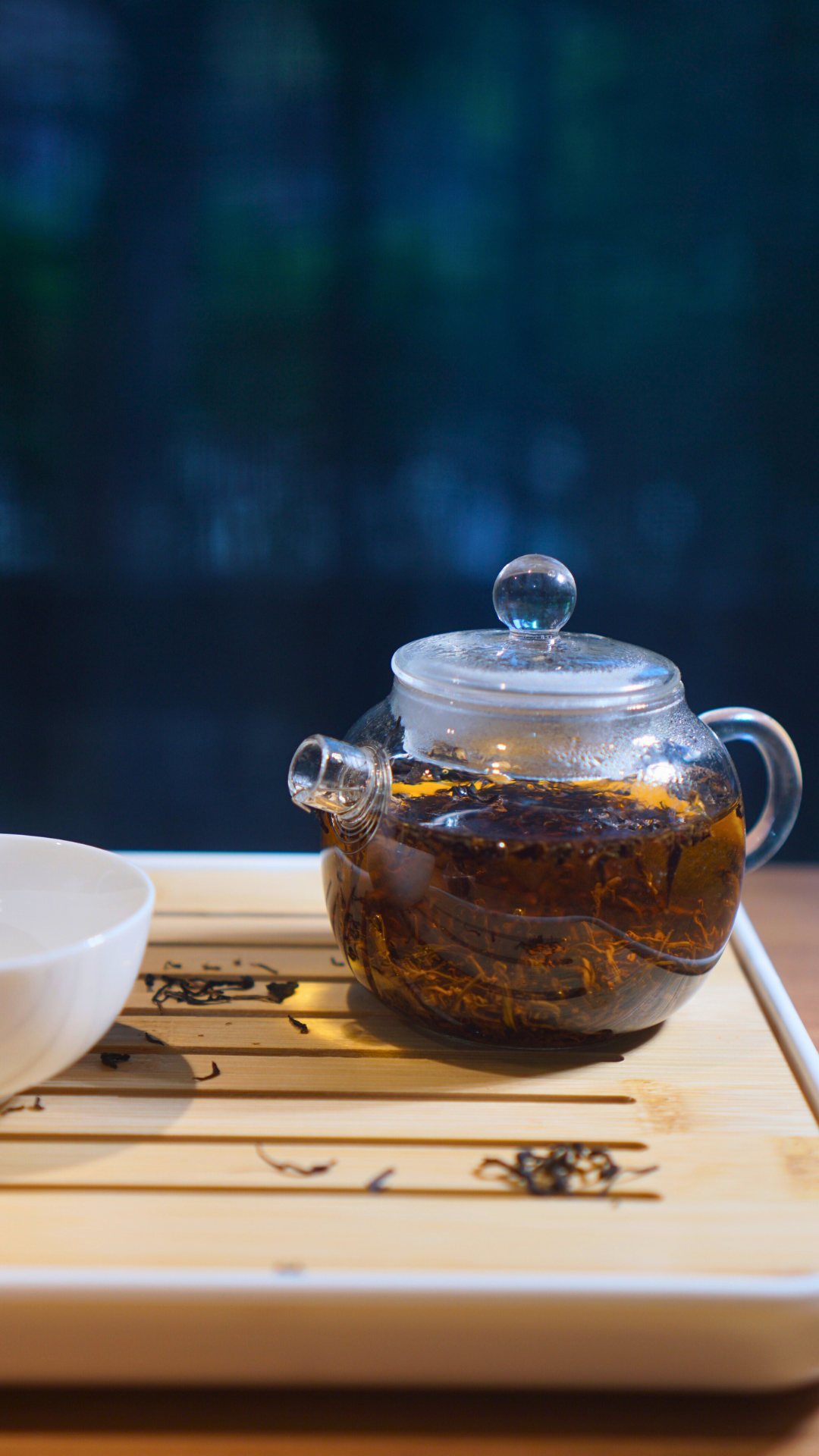
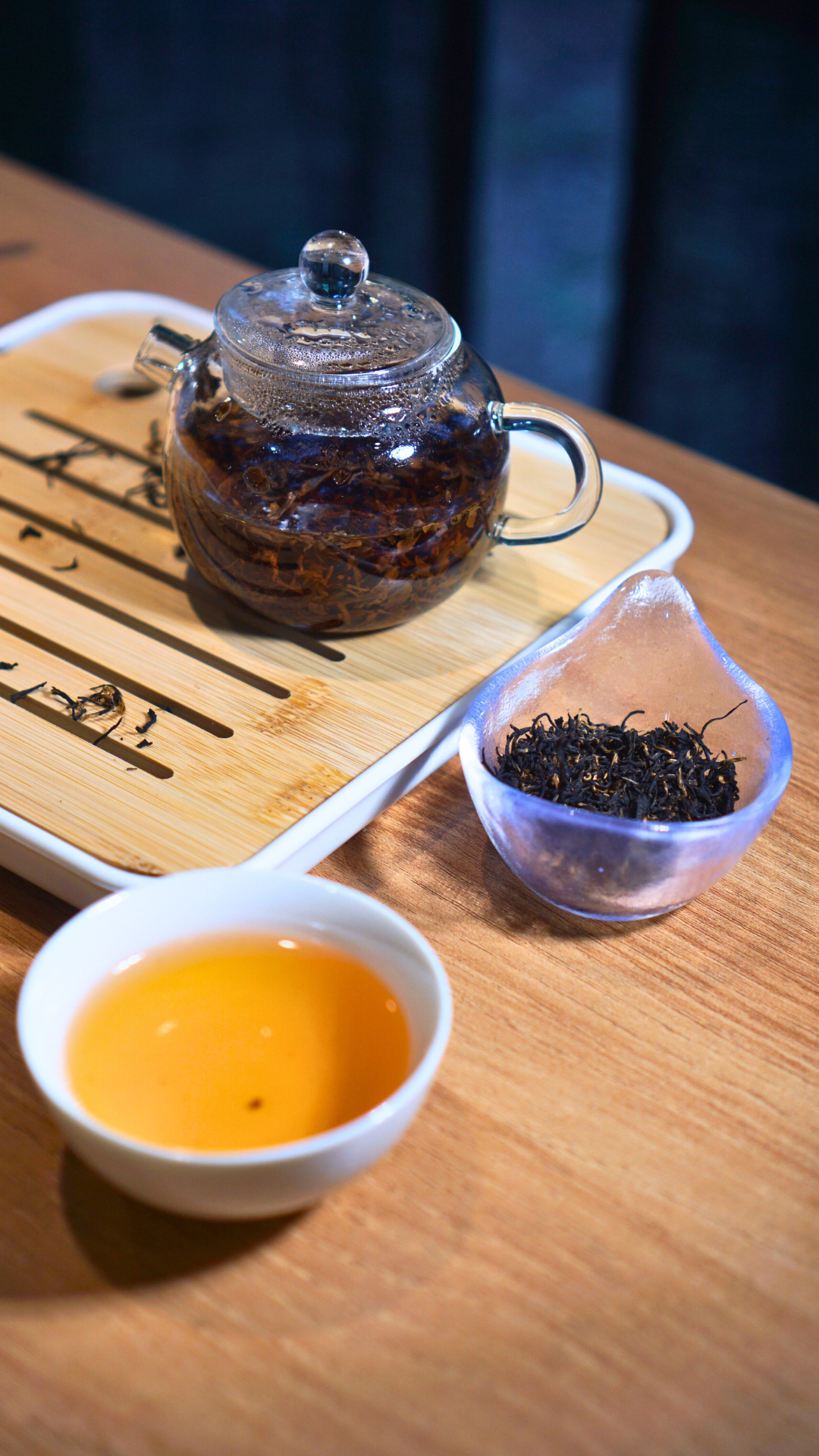
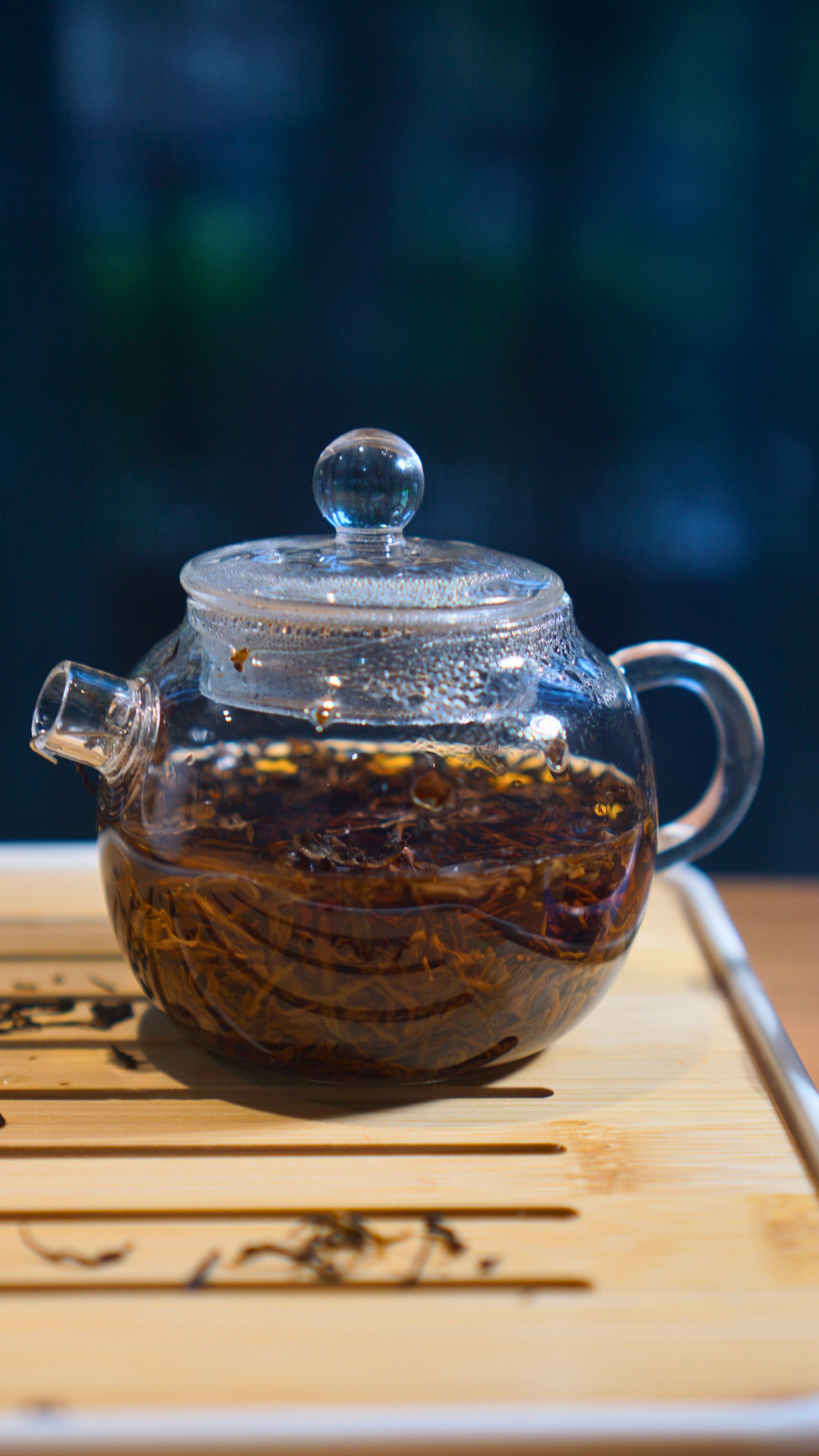
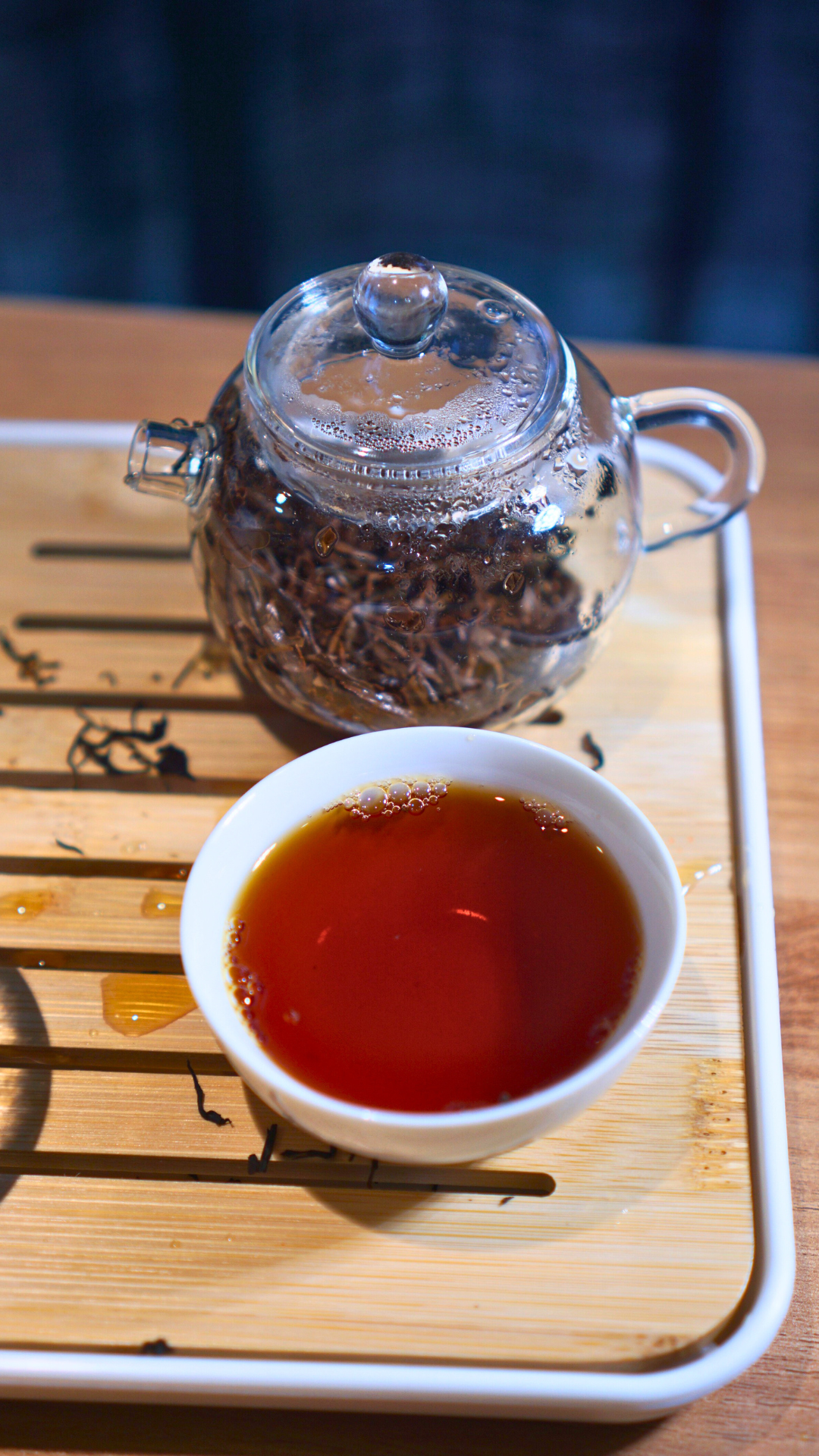
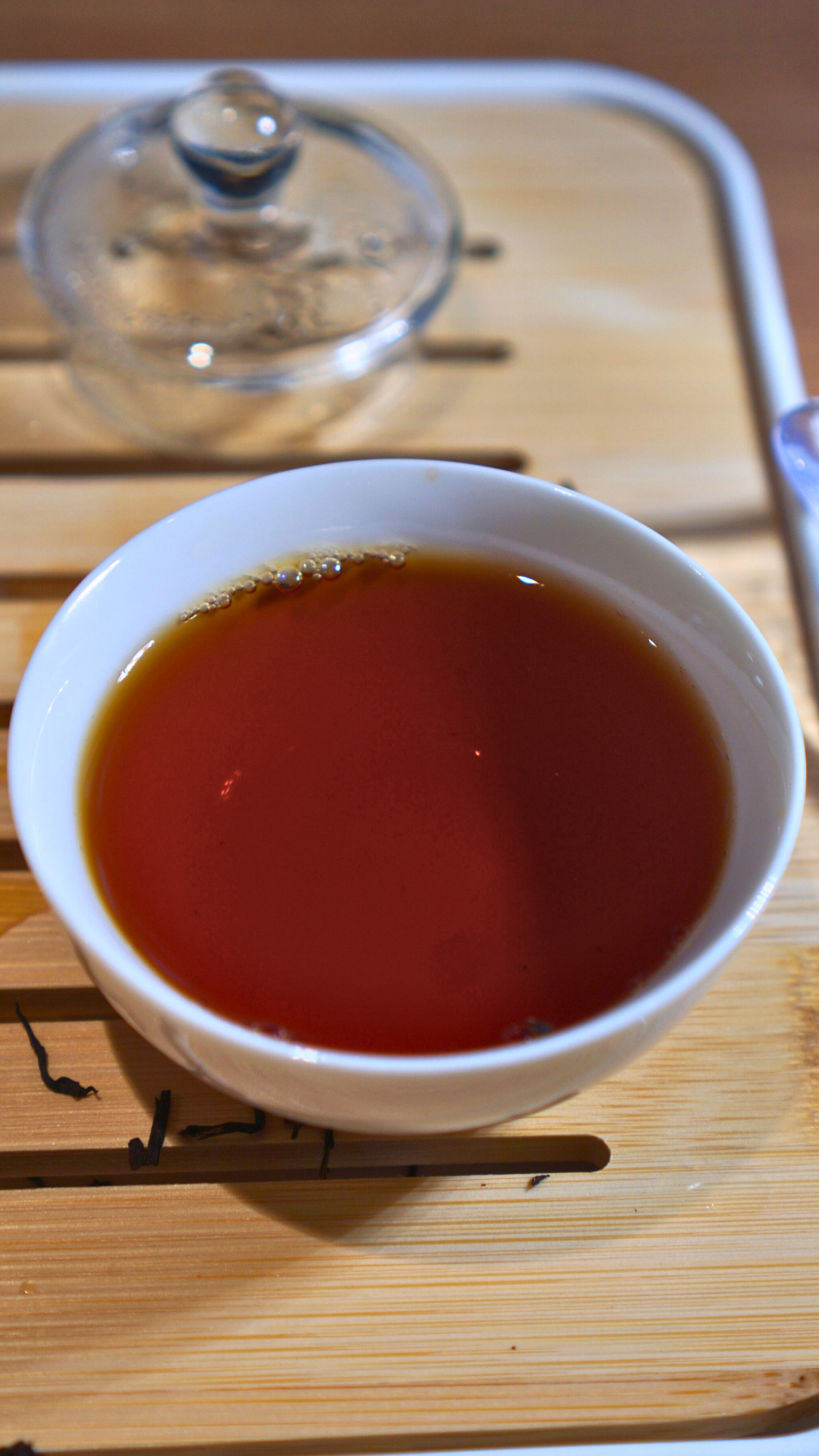
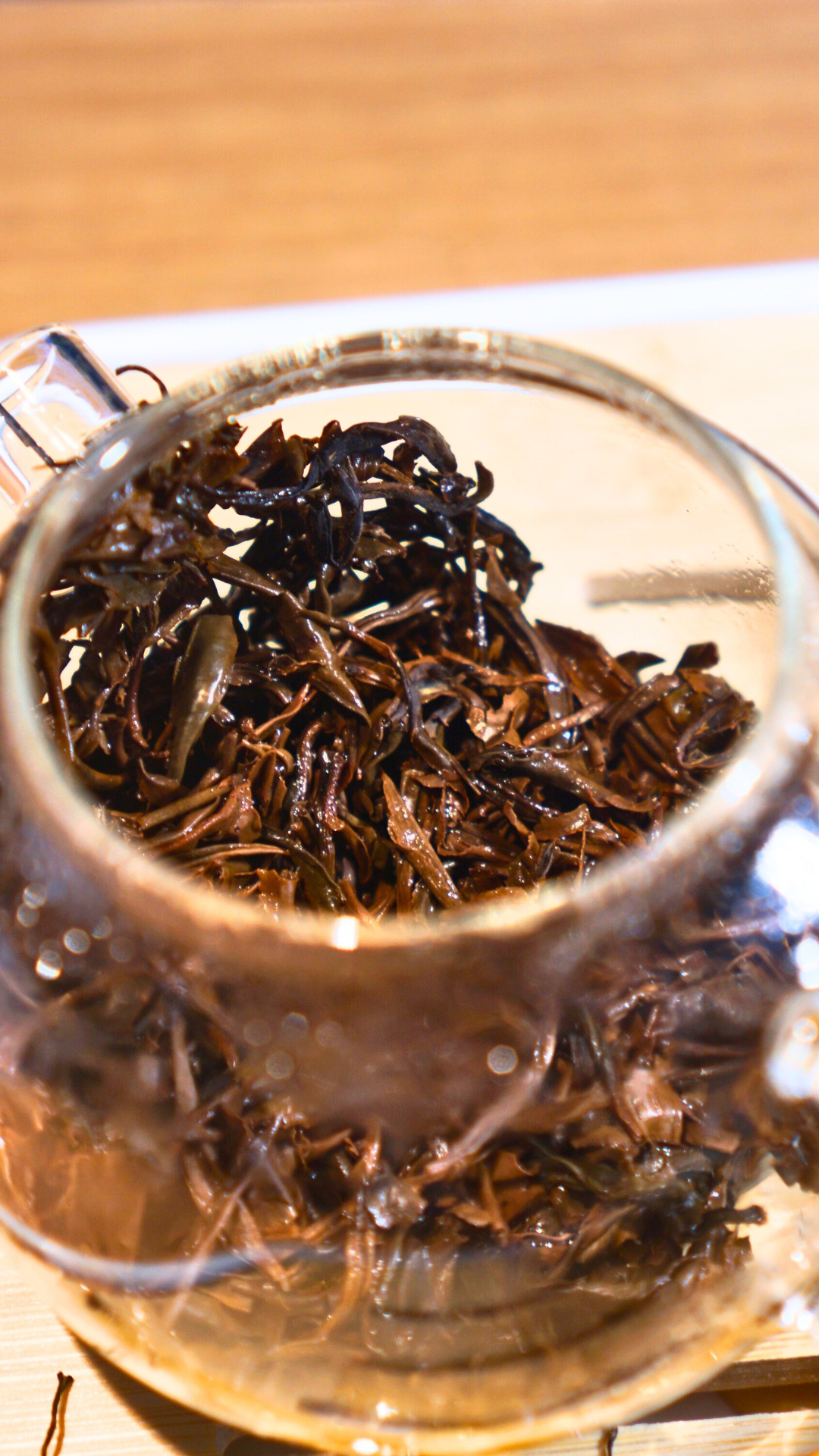
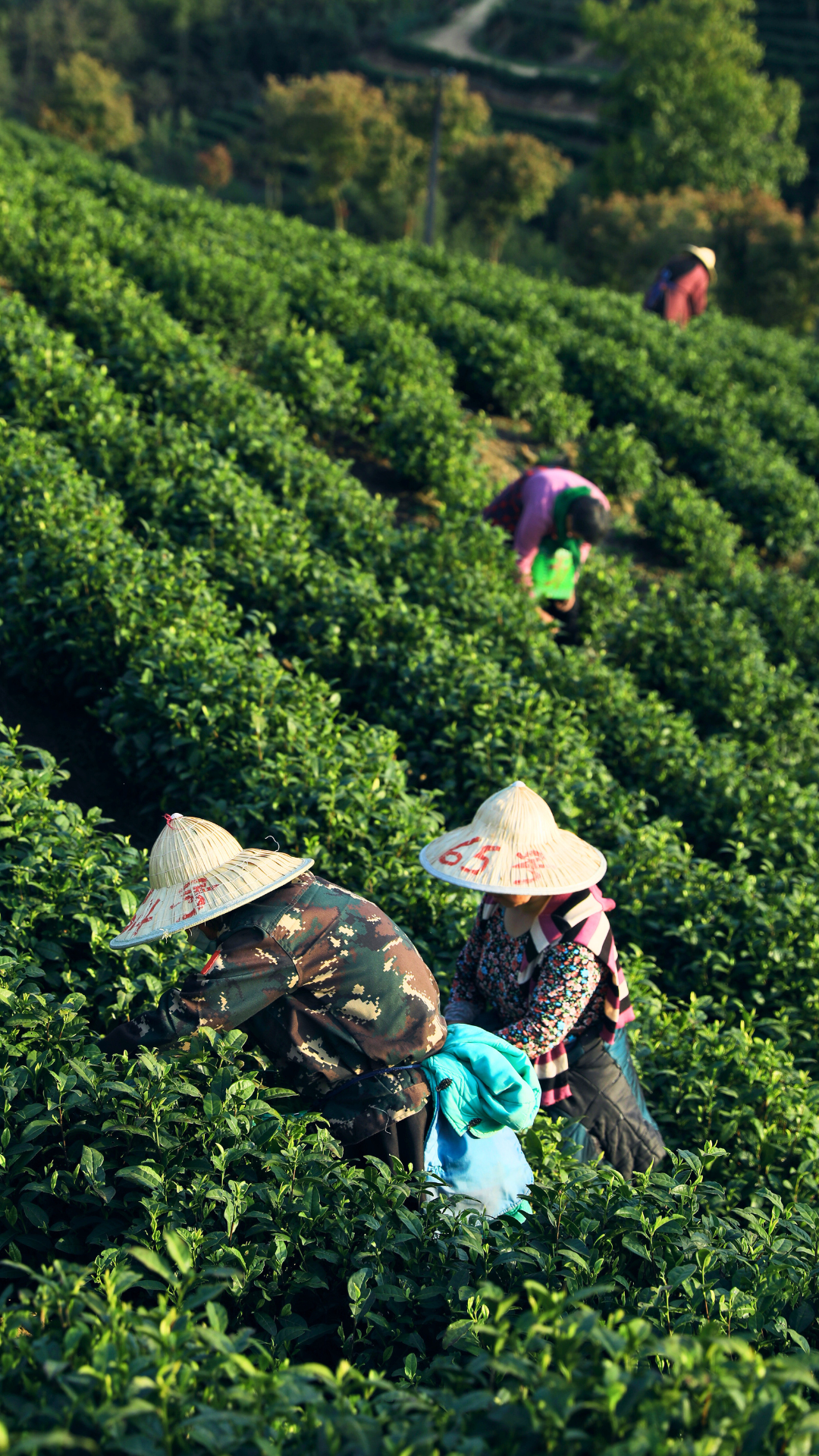
This Ninghong and Qihong tea look very similar, but their flavors are slightly different. The Qimen Mao Feng tea has a fruity aroma mixed with a hint of honey, while this Ninghong tea is more like roasted sweet potato, with a slight smoky flavor. However, the tea liquor has a floral aroma. Overall, they are both very good black teas.
Chinese black tea is called "red tea" because the tea liquor is red. The red tea liquor, however, is not bitter—it’s definitely good tea!
My wife is from Jiangxi, and she always talks about how good the black tea is there. So this time, I bought some, and when she tried it, she said it was good. She mentioned that tea made entirely from fine buds is top quality. The price is a little higher than what you'd pay locally, but it’s hard for people back in jiangxi to ship the tea to Jersey. So, I’ve decided I’ll keep buying this “ninghong” tea here from now on—it’s worth it.

